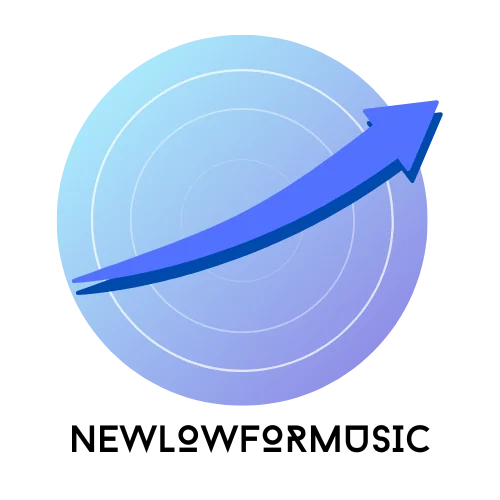Table of Contents
ToggleIn today’s fast-paced world, it’s not just about climbing the corporate ladder; it’s about building a sturdy ladder that won’t collapse under pressure. A well-crafted career development plan for employees is the secret sauce to transforming ambition into action. Think of it as a GPS for navigating the winding roads of career growth—minus the annoying voice telling you to make a U-turn.
Employees crave direction, and organizations that provide it not only boost morale but also enhance productivity. When employees see a clear path to success, they’re more likely to stick around and contribute to the company’s goals. So, why not invest in a career development plan? It’s like giving them a treasure map where X marks the spot for personal and professional growth. Let’s dive into the essentials of creating a plan that’s not just effective but also a little fun along the way.
Understanding Career Development Plans
A career development plan serves as a roadmap for employees, detailing their goals and the steps necessary to achieve them. Such plans foster a proactive approach to career growth within organizations.
Definition of Career Development Plan for Employees
A career development plan outlines an individual’s professional objectives and the strategies to meet those targets. It includes specific skills, experiences, and education required for advancement. Employees often create these plans in collaboration with supervisors to ensure alignment with organizational goals. This partnership supports a clearer understanding of roles and potential career trajectories.
Importance of Career Development Plans
Career development plans play a crucial role in employee retention and satisfaction. By outlining growth opportunities, employees feel valued and engaged in their roles. Improved employee morale often leads to increased productivity and a stronger commitment to company objectives. Organizations benefit from lower turnover and enhanced loyalty when they invest in employee development. Additionally, such plans equip employees with the necessary tools to navigate industry changes effectively.
Key Components of a Career Development Plan

A robust career development plan includes several essential components that guide employees toward their professional aspirations. Key elements enhance motivation and engagement.
Setting Career Goals
Career goals provide direction for employees. Goals should be specific, measurable, attainable, relevant, and time-bound (SMART). This clarity leads to focused development, allowing employees to visualize their futures within the organization. Regularly reviewing these goals ensures they align with both personal ambitions and organizational objectives. Consequently, employees gain motivation and purpose as they pursue their career paths.
Skills Assessment
Skills assessments evaluate current competencies and identify gaps. This process involves self-evaluations, supervisor feedback, and performance reviews. By pinpointing strengths, employees can leverage these attributes effectively. Additionally, recognizing areas needing improvement informs the development of targeted training programs. Keeping skills assessments updated allows employees to stay competitive and aligned with industry demands.
Development Activities
Development activities exemplify practical steps toward achieving career goals. These activities may include workshops, mentorships, on-the-job training, and online courses. Engaging in diverse learning opportunities fosters growth and skill enhancement. Peer collaboration can also enrich this experience, allowing knowledge sharing and networking. Tracking participation in development activities helps employees stay accountable and motivated.
Steps to Create a Career Development Plan
Creating a career development plan involves several crucial steps that guide employees toward their professional aspirations.
Analyze Current Skills and Interests
Employees must first assess their existing skills and interests. Evaluating strengths reveals abilities that may align with future roles. Additionally, identifying areas for improvement can inform training needs. Gathering feedback from peers or supervisors provides different perspectives, enhancing self-awareness. This reflection fosters a clearer understanding of which career paths might be most fulfilling.
Set Short-term and Long-term Goals
After assessing skills, setting both short-term and long-term goals becomes essential. Short-term goals should focus on immediate skill enhancements while long-term goals provide a vision for career trajectory. Constructing goals that follow the SMART criteria ensures they are specific, measurable, attainable, relevant, and time-bound. Establishing a timeline for achieving these objectives creates accountability and motivation, driving progress toward a successful career.
Identify Resources and Support
Identifying available resources and support plays a vital role in achieving career goals. Employees should consider internal resources like training programs, mentorship opportunities, and professional development courses. External resources, such as workshops, industry conferences, and online certifications, also contribute to growth. Engaging with supervisors or HR professionals can facilitate access to additional support, ensuring employees have the necessary tools to succeed.
Implementing the Career Development Plan
Implementing a career development plan requires ongoing commitment and attention. Organizations must prioritize regular reviews and adapt plans as needed to ensure continuous growth.
Regular Progress Reviews
Regular progress reviews keep employees on track with their career development goals. Scheduling these reviews quarterly offers a structured approach to evaluate achievements and address challenges. Managers should provide constructive feedback during each session, highlighting strengths and areas for improvement. This dialogue fosters accountability, motivating employees to stay focused. Employees benefit from recognizing their progress, enabling them to celebrate accomplishments and adjust timelines where necessary. Documenting outcomes from these reviews helps track evolving capabilities and informs future development strategies.
Adjusting Goals and Plans as Needed
Adjusting goals and plans is crucial for maintaining relevance in career development. As employees grow, they might discover new interests or face changing market demands. Organizations should encourage open communication, allowing employees to express their evolving aspirations. Flexibility in goals supports a dynamic workforce, aligning personal ambitions with organizational objectives. Regularly reassessing individual plans ensures they remain attainable and relevant, fostering longevity in employee engagement. Providing access to resources helps employees acquire new skills, empowering them to reach their revised goals effectively.
A well-structured career development plan is essential for both employees and organizations. It not only provides clarity and direction but also fosters a culture of growth and engagement. By investing in these plans, companies can create a motivated workforce that feels valued and empowered to reach their full potential.
Regular reviews and open communication are key to maintaining the relevance of these plans. As employees evolve and market demands shift, adapting goals ensures continued alignment with personal aspirations and organizational objectives. Ultimately, a robust career development plan is a win-win, driving individual success and contributing to the overall success of the organization.







